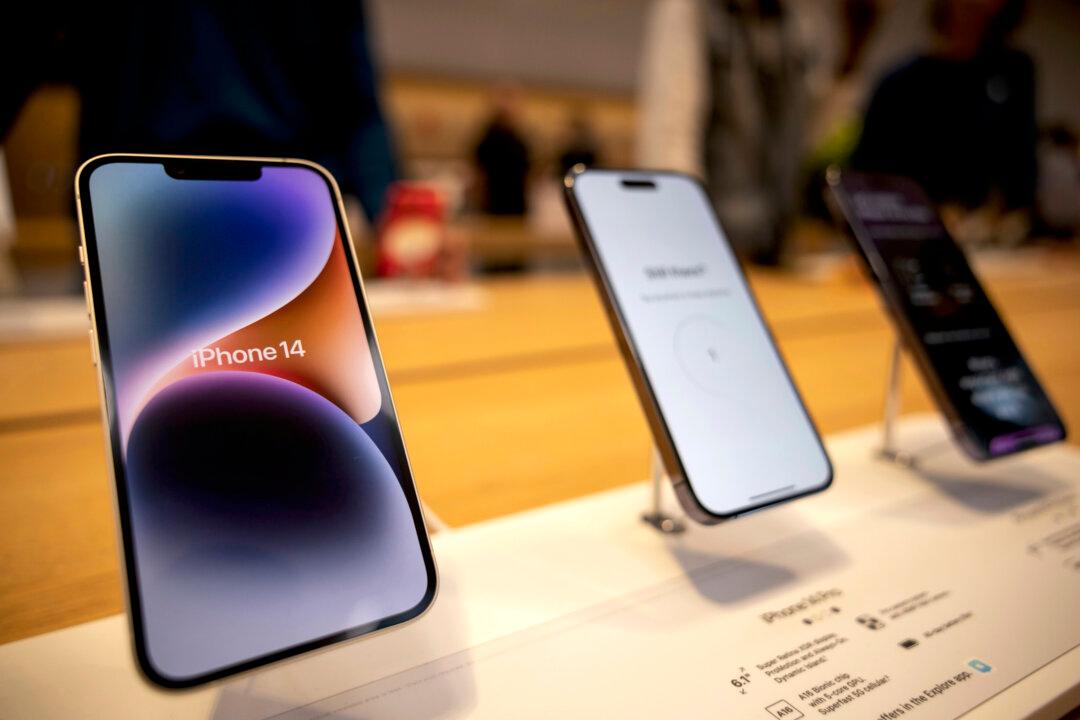NEW YORK—Cotton is a key input to the apparel industry and producing it accounts for 2.6 percent of global water use. For just one T-shirt made from conventional cotton, you need 2,700 liters (713 gallons) of water, and a third of a pound of chemicals. With sustainability becoming increasingly important, particularly to millennials, some designers want to make garments that are truly sustainable. The only problem is, they don’t know where the cotton comes from.
“Of course nobody can really tell you who the cotton farmers are,” said founder and CEO of Sourcemap Leo Bonanni. “That’s because there’s hundreds of thousands of them,” he said of the farmers. Sourcemap is a new tool that maps the supply chain from beginning to end automatically based on your purchasing data.
Bonanni and four other panelists spoke at a sustainability forum at Columbia University on Nov. 11 about the challenges of tracing the sources of fabrics back to the original cotton farms. They said the reason is a lack of transparency, which has always been a tough hurdle to topple in the fashion industry.
The panelists agreed that even if you could do the research and find out who the suppliers are, there still isn’t any innovative technology in place to track and store the data.
The Problem
Textile waste accounts for approximately 14.3 million tons of municipal solid waste generation—5.7 percent of total municipal solid waste generated in the United States, according to the Environmental Protection Agency. But most people in the fashion industry are not thinking about sustainability.
The “fashion industry is horribly unsustainable,” said Patrick Duffy, vice president of sustainability, manufacturing, & external affairs at Manufacture NY. He said getting people at the factory to recycle waste fabric material is hard enough because they are not in the habit of doing that.
But on a global level, which is where the hundreds of thousands of suppliers are located, it’s like searching for a needle in a haystack to find out who was involved in making the fabric you bought.
“When responsible brands try to set up strong procurement processes for their contractors … that’s great,” he said, “But those contractors have 15 or 20 other subcontractors and who knows where they come from or what they’re doing?”
And the smaller the company is “the fewer resources they have to really account for their suppliers, sub-suppliers, their undeclared sub-contractors,” said Bonanni. So it’s even worse for consumers who haven’t got a clue how that new organic T-shirt was made.
“The company you’re buying from probably has tens of thousands employed,” said Bonanni, so he doesn’t think executives have time to go visit suppliers. In 2013, there were 4.2 million people globally employed in the fashion industry, which represents a lot of supply chain to keep track of.
It’s bad enough that consumers can’t make informed decisions about what they are buying, but if you’re a business you “can’t even measure what your current impacts are much less try and mitigate the negative impacts you’re having,” according to Teel Lidow, founder of the sustainable fashion startup Boerum Apparel.
Lidow said one T-shirt could have cotton from 100 different farms. “It all gets mixed together at some point,” he said.
The cotton goes through clearing houses where it’s divided up based on grading rather than origin. “Any information is more or less stripped off it at that point,” he explained.
And not only that, but there are very diverse supply chains and not a lot of research on the different fibers. “For example, one piece of research on cotton could be completely irrelevant to cotton grown in another area,” chimed in Ruth Hsia Isenstadt, co-leader of a sustainable research team at Eileen Fisher.
Isenstadt said even if you do get the right information, there’s not always the technology or innovation available to actually come up with the solutions on how to use the fiber sustainably. And the research needed is costly.
Another barrier to sustainability is dye houses. An estimated 17 to 20 percent of industrial water pollution comes from textile dyeing and treatment, and an estimated 8,000 synthetic chemicals are used throughout the world to turn raw materials into textiles.
Scott Miller, director of Business Development at The Sustainable Apparel Coalition said, “Basically everything you have on you more likely than not in one way or another was dyed.” Unfortunately, this results in waterways around the world particularly in Asia becoming “colorfully polluted,” he said.
China’s textile industry processed 41.3 million tons of fiber in 2010 and accounted for 53 percent of the world’s total production. In Hong Kong alone, 234 tons of textiles went into landfills.
Glimmer of Hope
The Better Cotton Initiative (BCI), a project of WWF Global aimed at finding sustainable solutions for farmers, recently reported dramatic growth in sustainable cotton farming. Its holistic approach to sustainable cotton production is designed to encourage the scaling up of collective actions in three key sectors—environmental, social, and economic—to establish “Better Cotton.”
In 2014, 1.2 million farmers participated in the program, a 79 percent increase from the prior year. Farmers get support and training in growing cotton from experienced partners at the field level. Participants are encouraged to spread the word about the program by communicating results from the field. Monitoring and evaluation mechanisms are in place to ensure improvement and change.
BCI reports that farmers in the program produced 2 million metric tons of Better Cotton, which is up 118 percent. It estimates a 7.6 to 11 percent increased growth in global production in 2015.
And BCI is keeping track of the supply chain. It connects supply and demand for retailer and brand members of the Better Cotton supply chain.
While the BCI program looks promising, the sustainability panel thinks the fashion industry still has a long way to go in getting the supply chain completely sustainable.
“In order to get suppliers on board with sustainability work, you have to have some type of leverage in the industry,” said Isenstadt. But for now, these sustainability gurus are painstakingly taking it one step at a time and hoping for the next great technology innovation.





